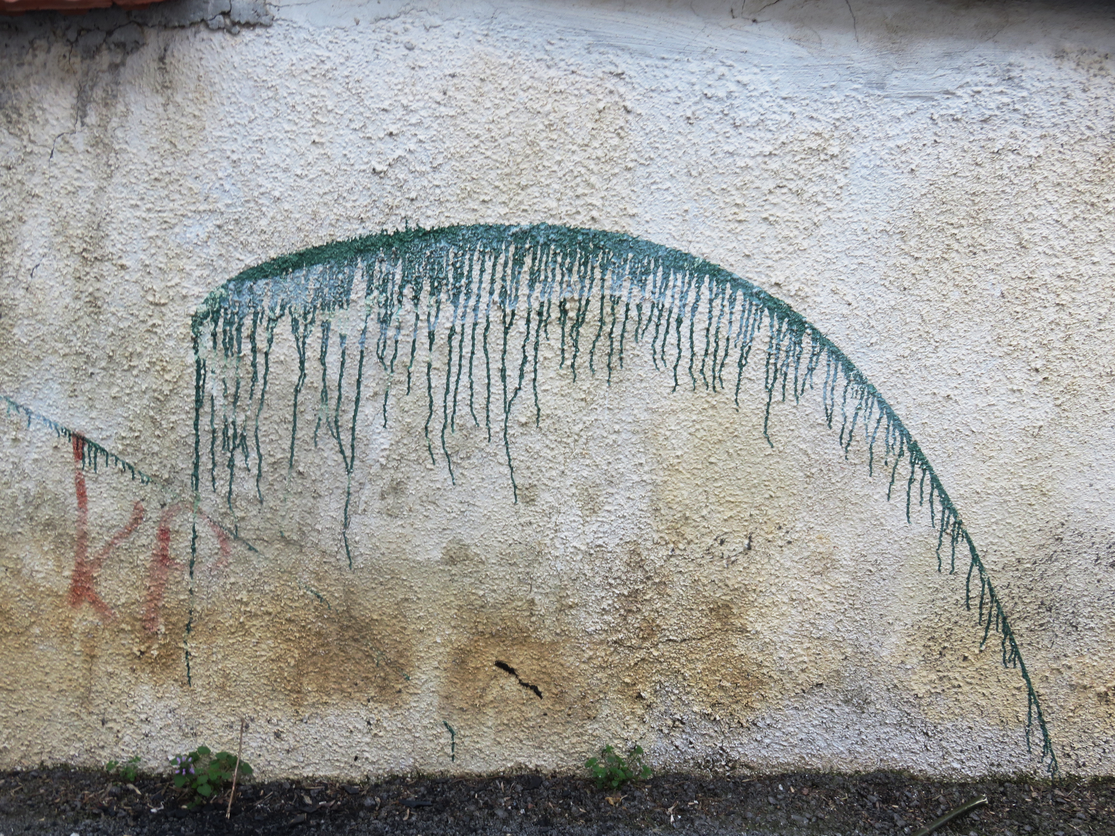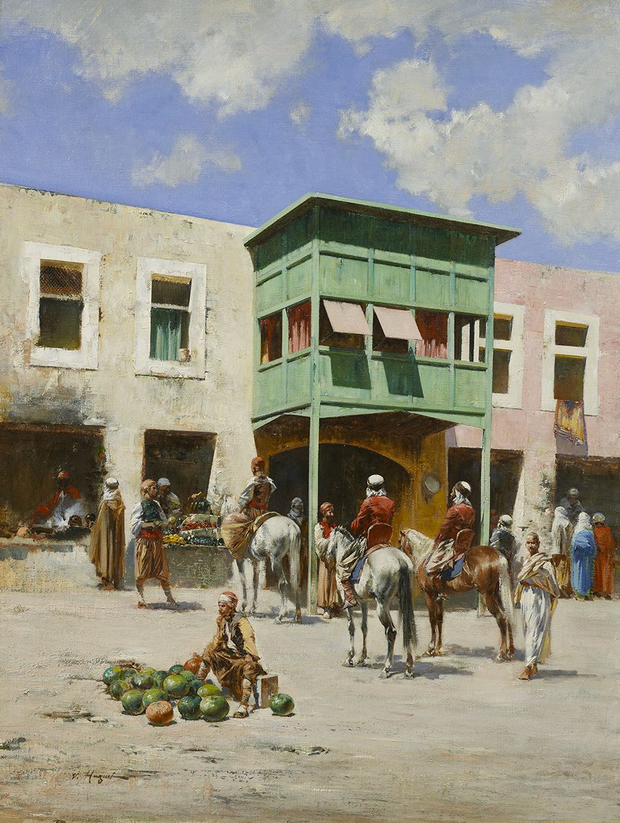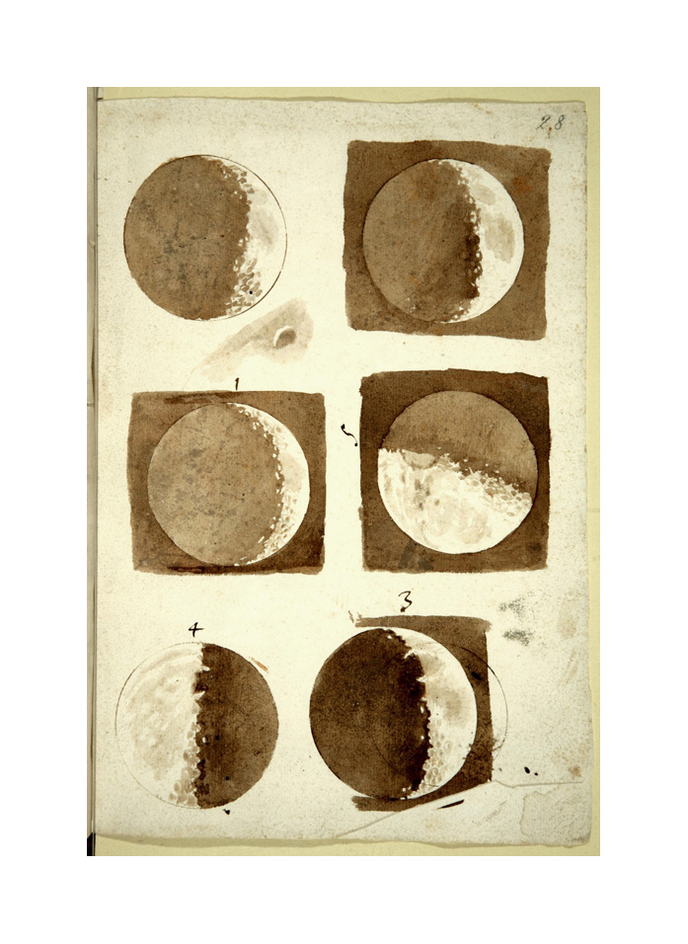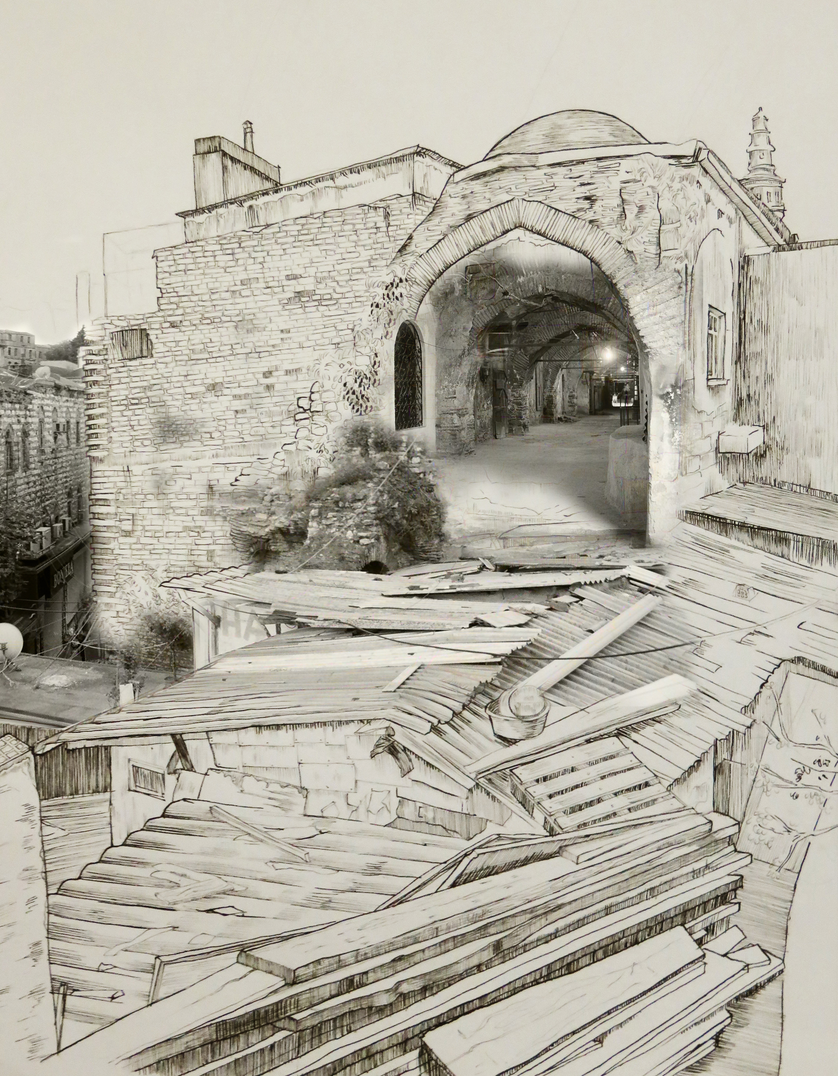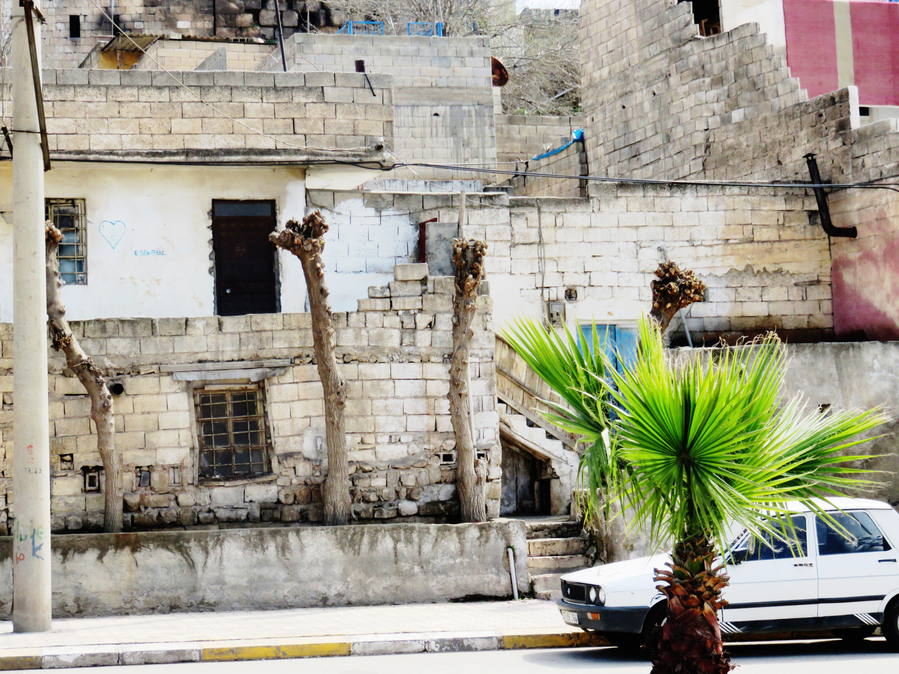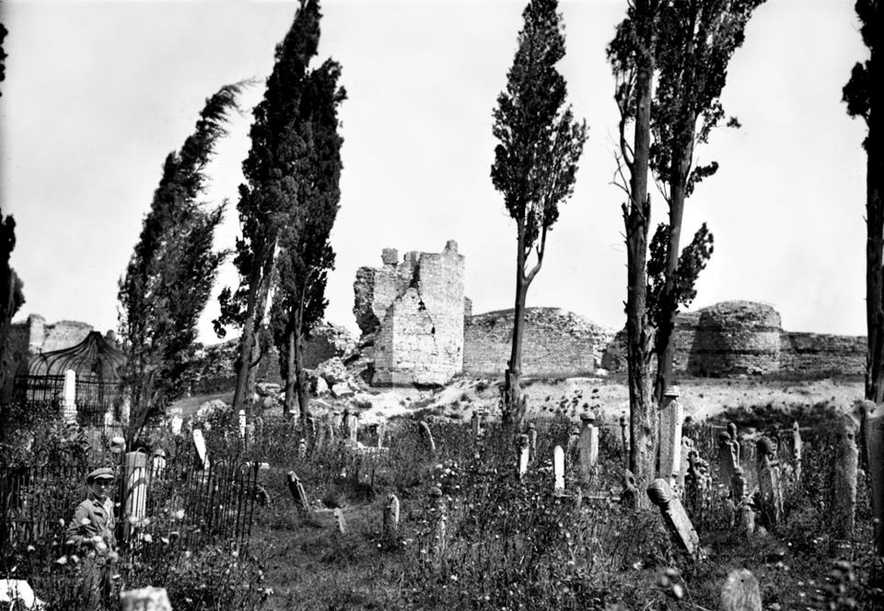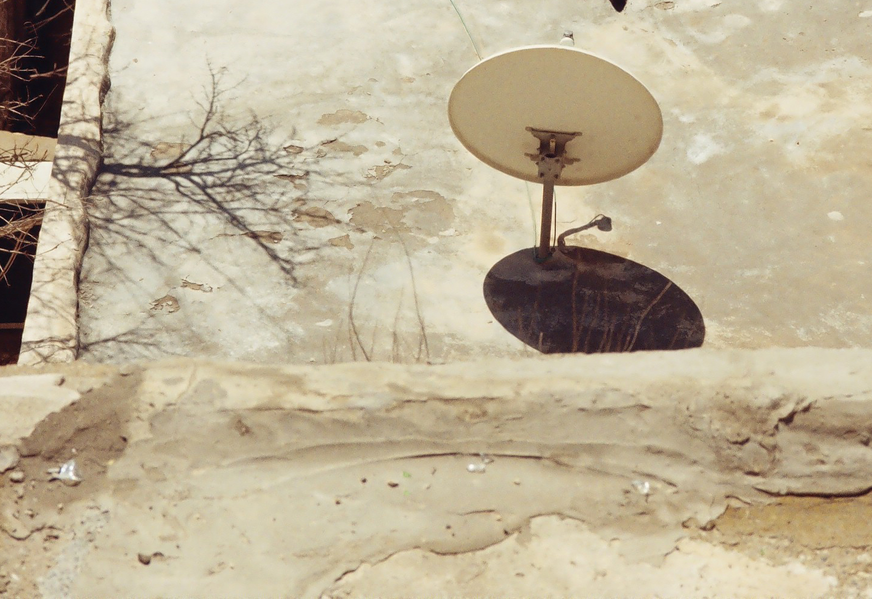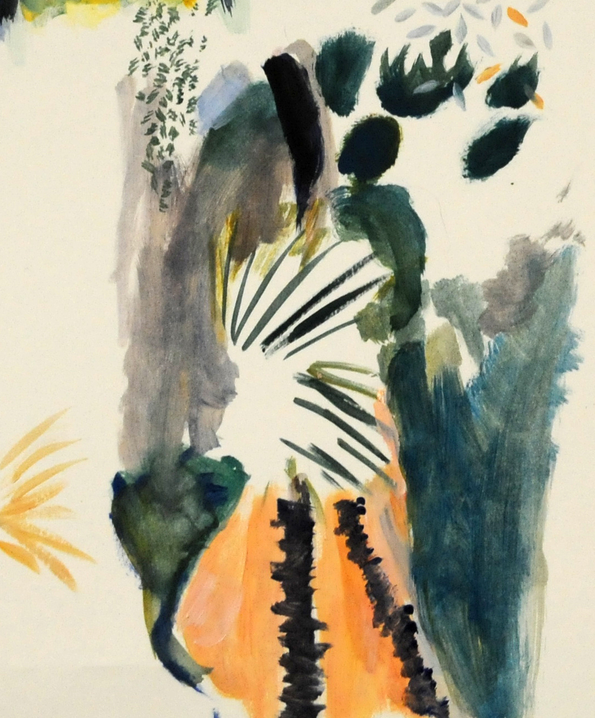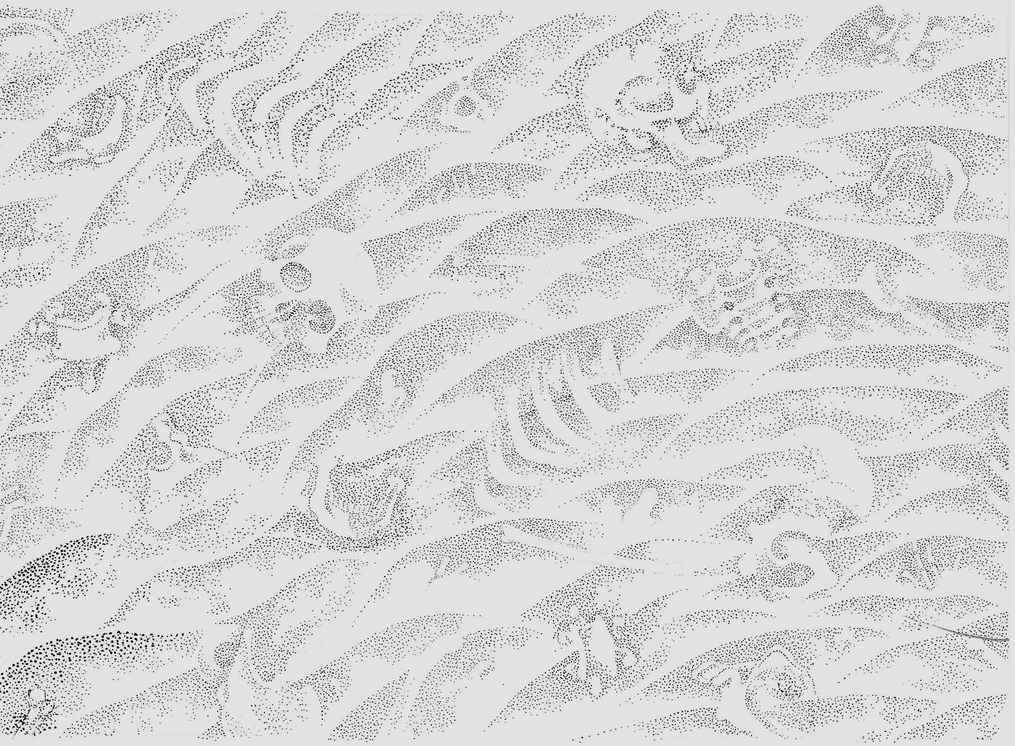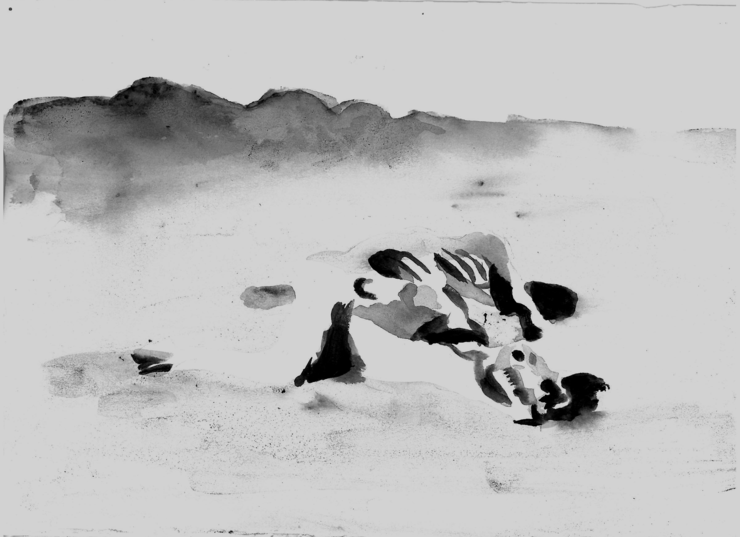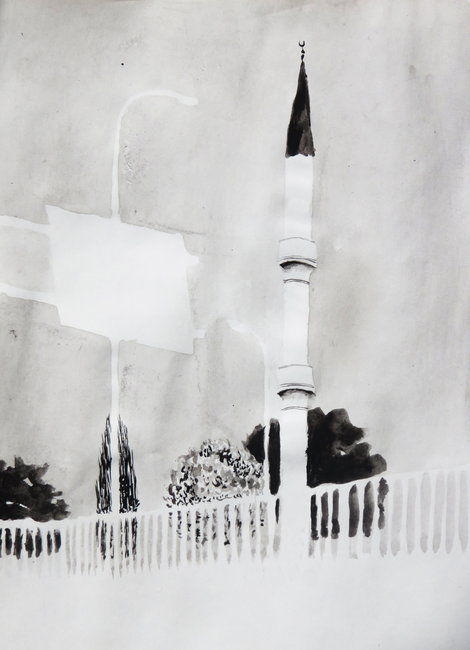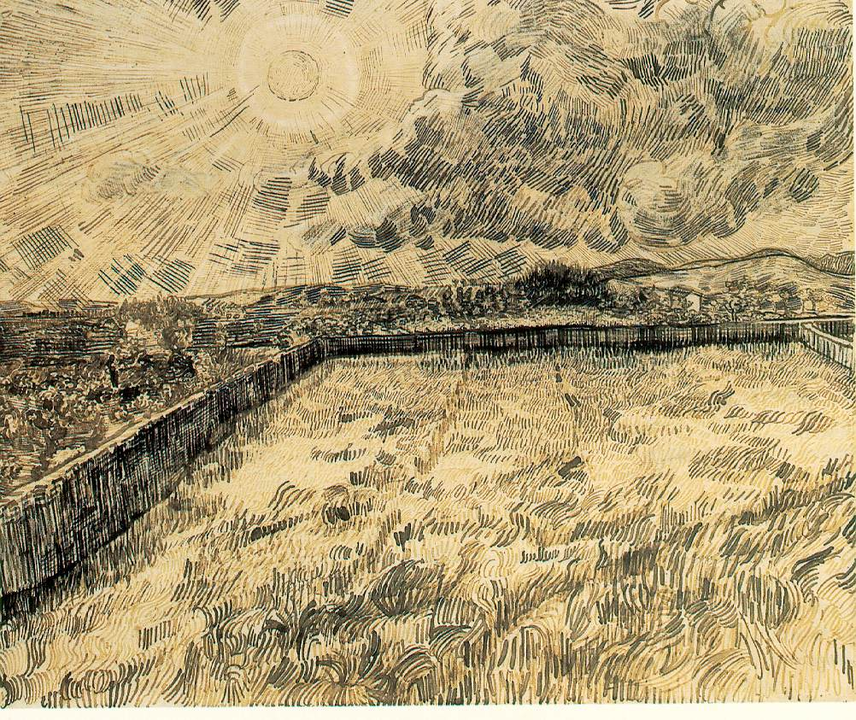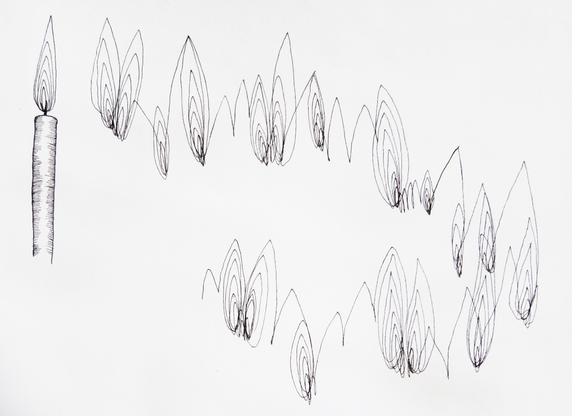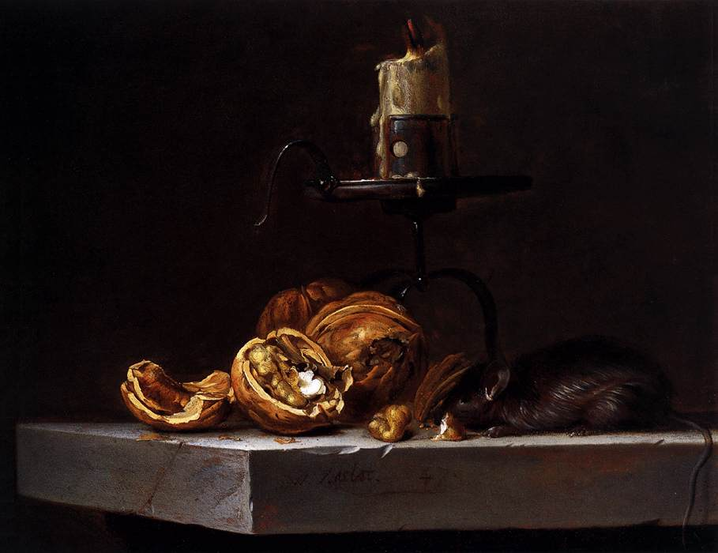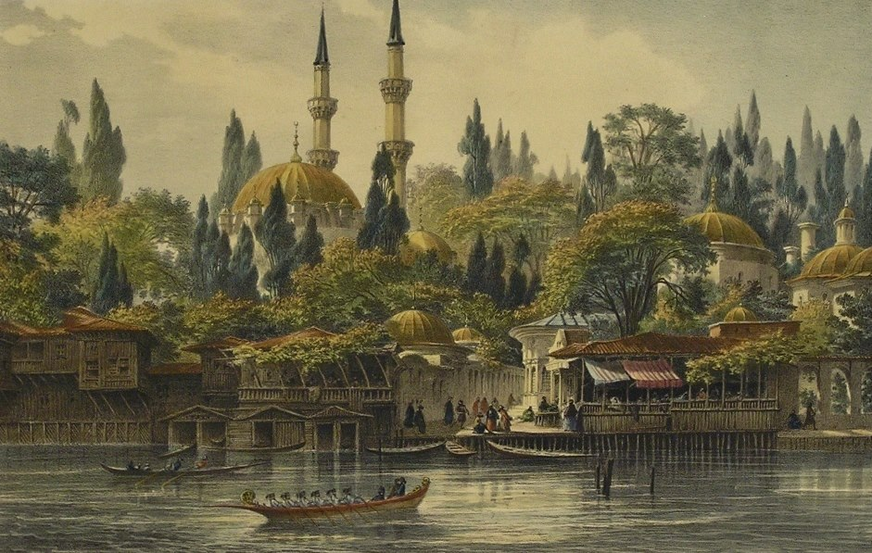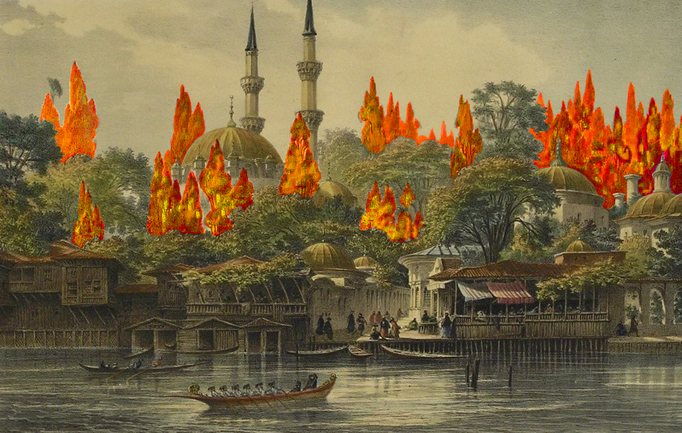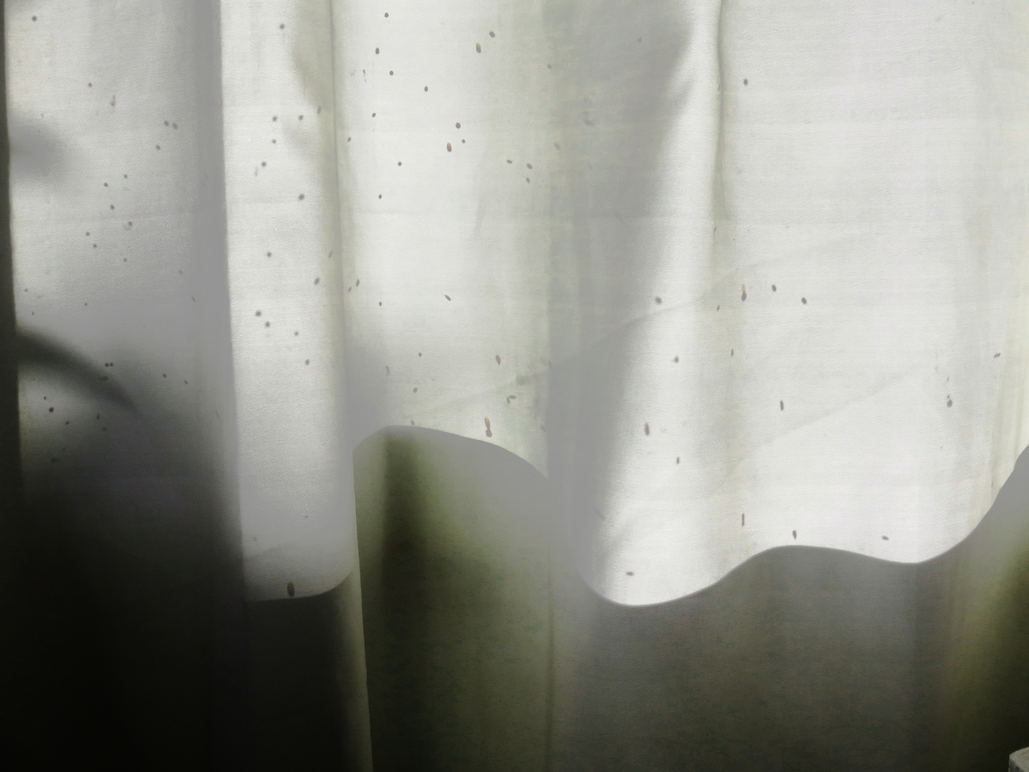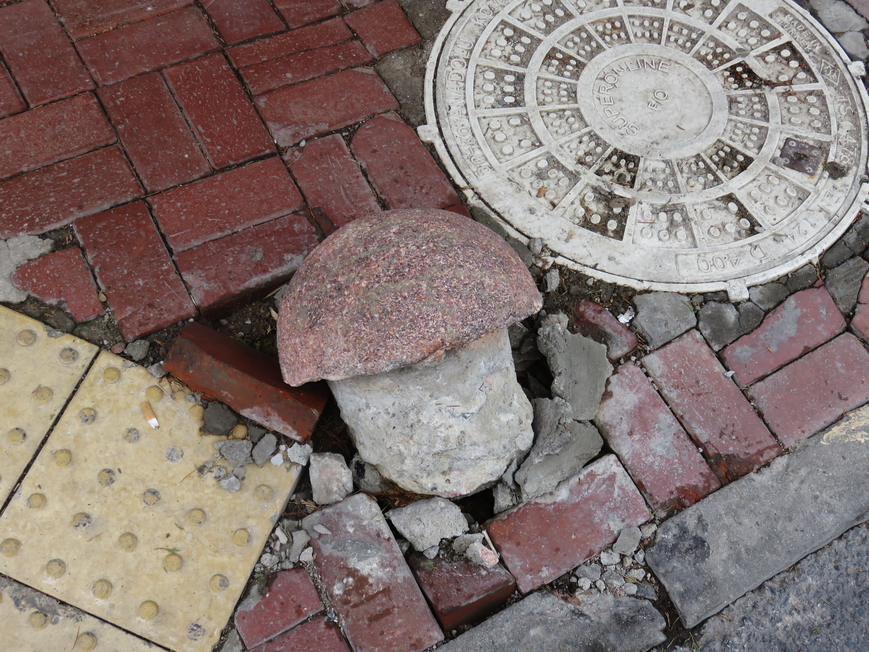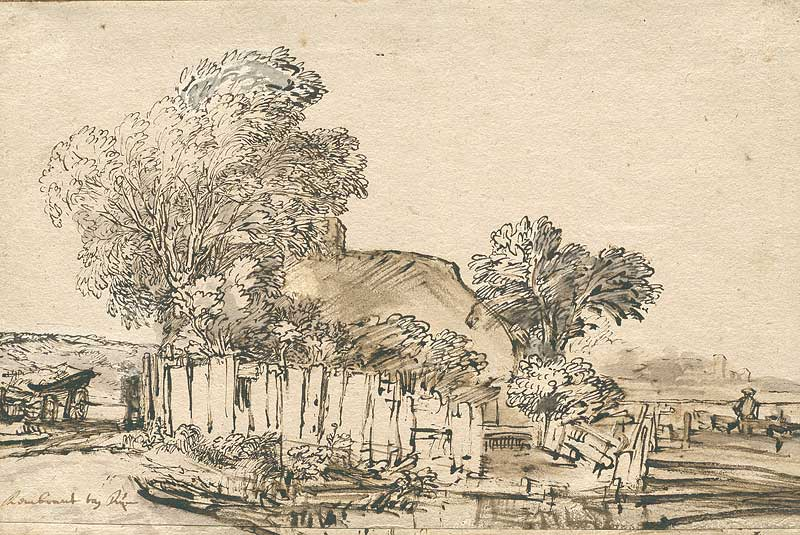Minarets and cypresses have their shape in common, but their sound is different. The cypress is a needle of silence, catching less wind with its closed foliage and therefore rustling in a softer voice than other trees. The minaret is from a different order; in between its calls for prayer it seems to be drawing breath, as to make it louder for the next time.
'Mind you,' he replied, 'I've seen a good deal of Mohammadan architecture one way and another, in Palestine, Egypt, and Persia, and I've given a good deal of thought to the matter. I can tell you the key to the problem if you like.'
'Really. What is it?'
'The whole thing's phallic,' he uttered in a ghoulish whisper. (Byron 1937)
These are nothing like the remains of great empires to be seen in Western cities, preserved like museums of history and proudly displayed. The people of Istanbul simply carry on with their lives amongst the ruins. (Orhan Pamuk 2005: 91)
Cedar & Cypress [are] the only trees about the capital. The Cypress [is] a green minaret, & blends with the stone ones. The minaret is perhaps derived from the cypress’ shape. The intermingling of the dark tree with the bright spire is expressive of the intermingling of life & death. (Melville 1989)
The Ottoman cemeteries in Istanbul are loaded with meanings, imposed upon me by the Orientalist tradition, by the threat of urban development projects, by my position of a western stranger in a place of Islamic veneration, by the omnipresence of death, and so on. But when I wander around in there I like to strip the many layers of context from time to time. This doesn’t mean I close myself off from the world around me, on the contrary. I give my senses free reign; focus my attention on the visual aspects of my surroundings. Only then the environs might take me by surprise.
The black sheep of Turkey: Kurds, Armenians. Recently also Syrians have to deal with racism and oppression.
The cemeteries have a great deal to offer artists that draw inspiration from their surroundings. They are small bubbles of fascinating refinement in a modern urban landscape. With ‘refinement’, I don’t mean they are polished. Most of them are partly in ruin, suffering from time and lack of maintenance. A ruin in which you can make yourself comfortable, undisturbed, perceiving attentively.
Although the graveyards soften my mood, their shapes are very capricious, like a denture from an old man with many teeth in wrong directions and a few lacking as well. I record forms and colours, make outlines in sketches and words. The less I think about anything, the sharper/more distilled they are.
The Turk received the art of thinking about nothing through his genes, if Edmondo de Amicis is to be believed. In his book ‘Constantinople’ he devotes a short chapter to the ‘idleness’ of the Turks. He describes it as a kind of inertia, in which they sit immovably on the same spot for hours, smoking their chibouk or narghile, or wander through cemeteries or little alleys. (de Amicis, 1877: 197-200) Although the goods they are smoking are unlikely to enhance their observations, I gladly believe Turks have less problems clearing their minds than the average European. If we do nothing, we are most probably waiting for someone or something, often playing with a phone. Here it is a pastime like any other.
Black (!) slugs thrive slumbering in the shadow.
A polyphony of hungry stomachs. The smell of rosemary.
A lingering sunset, without the pinkish blue tone today. Smoking minarets sting the raising moon, which becomes soft and melts in the clouds. Misty blue cobblestones try hard to match the colour of the white turbes. Golden beehive windows. Snoring gravestones that, when awake, fight with the trees to stay upright, each of them succeeding in turn.
Salmon pink and unsaturated blue bring the Aya Sofia up the Golden Horn to Eyüp.
Mothers with kids pulling their arm look at my bare feet. The Arabic letters on a gravestone start dancing, swarm over the ground into the dirt.
[The Turk] looks upon death calmly and without repugnance; he does not connect it with ideas of gloom and horror, as we are too prone to do in Europe,-he spreads his burial places in the sunniest spots-on the crests of the laughing hills, where they are bathed in the light of the blue sky; beside the crowded thoroughfares of the city, where the dead are, as it were, once more mingled with the living,-in the green nooks that stretch down to the Bosphorus, wherein more selfish spirits would have erected a villa, or have planted a vineyard. He identifies himself with the generation which has passed away-he is ready to yield his place to that which is to succeed his own. (Pardoe 1838: 36)
Two Turks, leading a child by the hand, passed down the path to a tomb some little distance off, on reaching which they paused, and, having spread out the contents of a package one of them carried under his arm, they seated themselves on the tombstone and began to eat. I stood watching them. When the meal was ended the elder of the two wrapped what appeared to be a fish and a piece of bread in a scrap of paper, and with a gesture of respect placed it in a hole beside the grave. This having been done, they both lit their pipes and fell to smoking tranquilly, while the child ran up and down and played among the trees. (de Amicis 1896: 99)
In spite of its vast population of old grey stones, however, there is to me nothing so melancholy there as in our trim Western places of burial, shut away from the world and visited only with whispers. There is, of course, a gravity, the inseparable Turkish gravity, but withal a quiet colour of the human. For the Turks have a different attitude toward death from ours. I do not mean that they lack feeling, but they seem to take more literally than we their religious teaching on the subject. They have no conventional mourning, and the living and the dead seem much nearer to each other.
(Dwight 1915: 218-219)
Stamboul is submerged in tombs. Everyone loves them. The tombs extend right into the courtyards of the houses. One Turkish Sunday I saw a fellow through a chink in a gate, seated in his garden, his back against the white column of a tomb; he was just daydreaming, apparently not thinking of anything in particular, but, as for me, I was struck by this. (Le Corbusier 2007: 123)
It is in these spots that one feels truly in the East, where all around reigns the stillness of death. (Emerson 1838)
With us life is a seething torrent; with them, a sleeping pool. (de Amicis 1896: 200)
Taking your time is the best way not to lose a second. (Bouvier 2009: 329)
My artistic outcome obtained during or after this pastime, are a means of recording, fixating impressions. I want to extend my visual archive, call halt to the volatility of my observations, of life.
The impressions I gather in Istanbul’s cemeteries are from a richer sort than the ones in the street outside my flat. Everyone chooses his own stations where to pause and muse. As for me, the proximity of death makes me want to obstruct volality/transcience/hastiness/perishableness.
After having considered the graveyards outside their contexts and having formulated some impressions, I look for associations: literary, art historically, visually. In other words, I start contextualizing again, but without any restriction, and preferably also further than the most direct and evident associations.
I never expected to see my affects of the cemeteries in Istanbul to be reflected so clearly in the travelogues of travellers two hundred years ago. Writers and artists sought refuge in the Ottoman cemeteries then as well, away from the overcrowded city centre that made a metropolis often as unbearable as it does today. Next to the mosks and views from the Bosporus or Golden Horn were these the popular places of the Istanbul of the orientalists, places where imagination and reality found each other in romantic reveries.
Knowing how to draw a body should be as evident as expressing yourself in your own language; not being able to depict the things you love is a serious default, a humiliating deficiency. (Bouvier 2009: 300)
To flee on the contrary is to produce reality; to create life, to find a weapon. (Deleuze 1987: 2: 82)
Je n’ai pas besoin de dire que ce bois si pittoresque, si mystérieux et si frais est encore un cimetière. Il faut en prendre son parti, tous les lieux de plaisir à Constantinople se trouvent au milieu des tombes. Voyez, à travers les massifs d’arbres de blancs fantômes qui se dressent par rangées, et qu’un rayon de soleil dessine nettement çà et là ; ce sont des cippes en marbre blanc de la hauteur d’un homme, ayant pour tête une boule surmontée d’un turban, quelques-uns sont peints et dorés pour compléter l’illusion, la forme du turban indique le rang ou l’antiquité du défunt. Quelques-uns ne sont plus à la dernière mode. Plusieurs de ces pierres figuratives ont la tête cassée, c’est qu’elles surmontaient des tombes de janissaires, et à l’époque où cette milice fut détruite, la colère du peuple ne s’arrêta pas aux vivants, on alla dans tous les cimetières décapiter aussi les monuments des morts. Les tombes des femmes sont également surmontées de cippes, mais la tête y est remplacée par une rosace d’ornements représentant en relief des fleurs sculptées et dorées. Écoutez aussi les rires bruyants qui résonnent sous ces arbres funèbres : ce sont des veuves, des mères et des sœurs qui se réunissent en famille près des tombes d’êtres aimés. La foi religieuse est si forte dans ce pays, qu’après les pleurs versés au moment de la séparation, personne ne songe plus qu’au bonheur dont les défunts doivent jouir au paradis de Mahomet. Les familles font apporter leur dîner près de la tombe, les enfants remplissent l’air de cris joyeux, et l’on a soin de faire la part du mort et de la placer dans une ouverture ménagée à cet effet devant chaque tombeau. Les chiens errants, présents d’ordinaire à la scène, conçoivent l’espérance d’un souper prochain, et se contentent, en attendant, des restes du dîner que les enfants leur jettent. Il ne faut pas croire non plus que la famille croie que le mort profitera de l’assiettée de nourriture qui lui est consacrée ; mais c’est une vieille coutume qui remonte à l’Antiquité. Autrefois des serpents sacrés se nourrissaient de ces offrandes pieuses ; mais, à Constantinople, les chiens aussi sont sacrés. (de Nerval 1851: II, 165)
This cemetery had none of the horror that we in Europe associate with our burial grounds; oriental sadness is more gentle, and at the same more majestic. Great stretches of mournful solitude, barren hills, planted here and there with dark cypresses; at intervals and shaded by these huge trees, were lumps of earth turned over the previous day, ancient markers, and curious Turkish tombs surmounted by fezes and turbans. (Loti 2013)
And how could one forget the Eyüp cemetery? (…) Just like an aristocratic neighborhood immersed in great silence, this is a white, shaded and incredibly beautiful city of graves, which inspires a feeling of worldly veneration along with an otherworldly grief. (…) Nowhere else in İstanbul can you find a place that so elegantly presents Muslim art, which beautifies the depiction of death and makes you admire it without fear. This is a cemetery, a palace, a garden, a sanctuary filled with both grief and elegance that inspires both prayers and smiles on your lips. (de Amicis 1896)
The trouble with Eyüp, where the Kocatas left me, was that this perfect little village at the end of the Golden Horn did not seem real at all. As an image of the inward-looking, mysterious, religious, picturesque and mystical ‘East’ it was so perfect as to seem like someone else’s dream, a sort of Turkish Eastern Muslim Disneyland planted on the edge of the city. (…) What makes Eyüp so close to Western dreams of the East, and makes everyone love it so, so its continuing ability to derive full benefit from the West and Westernising Istanbul, while still keeping itself distant from the centre, the bureaucracy, the stat institutions and buildings. This was why Pierre Loti loved the place, finally buying a house and moving here – because it was unspoiled, a beautiful image of the East, and perfect – and for the same reasons, I found it irksome. (Pamuk 2005: 320)
Funerals are generally hurried, and sometimes with indecent haste : so, in this as in other things, the Turk is entirely opposed to European habits ; the only hurry in which he is ever seen, is when going to his grave. (Allom & Walsh 1839: 13)
The new graves. Painted fezzes and roses try to match the Ottoman ones. Flat but more colourful. The letters are always black. Family graves without dirt look like empty pools, similar to the one in the Van Gogh painting. Oleanders and fig trees spread and grow like weed. Threatening clouds cluster together. The young cypresses are unable to reach to the sky; their peaks grow downwards, in an arch, like portals.
The Ottoman grave has two gravestones, one at the head and one at the feet. On each stone an angel is sitting. Their names are Nakir and Munkar – ‘The Denied and The Denier’ – their task is to judge the departing souls of the muslims. During their lives muslims are constantly accompanied by two angels as well, one on each shoulder. One of them notes all their good deeds, the other one all their bad ones. How would the relation between IS-warriors and their angels be like? Maybe they decapitated them as well.
Orhan Pamuk is right. Eyüp is a dream compared to the rest of the city, a dream in which only strangers gladly believe; Istanbullus see deceit. I walk through the past and realise that my impressions and affects are probably tempered versions of those from the travellers of earlier centuries. The unknown warmly radiates here, it doesn’t collide with my world but blends in. Although I enjoy spending time here, more than in the Karacaahmet (Scutari) cemetery at the Asian side of Istanbul for instance, I am aware that I find myself inside a bubble. An idyllic marble village in a city of concrete. Istanbul lost its direction. The city and its inhabitants seem a helpless puppet tied to strings of money and power. You can’t live on the surface here. The city has a weighty past and seems defenceless against the future. I cannot enjoy the view without envisaging the finality of it. The scenery is too loaded, and contrary to natural landscapes, it is much harder to see urban landscapes outside of their problematic context. I can’t look at it the same way as the artists that gathered inspiration here in previous centuries, and I will never make images similar to theirs.
Alongside a part of the border of the cemetery a high wall stretches itself out. On top of the wall I recognize wooden barren boxes, probably coffins, but they are hardly comparable to the ones you find in our morticians, a profession that seems nonexistent in here for that matter. I imagine how the bodies suffer from the heat just like I do, and oppress the smell of the cypresses and cedars.
I ended up watching the Bosphorus burn with a curious, even joyous, crowd of people in pyjamas, hastily fastened trousers and slippers, holding babies on their laps and bags in their hands. As I would see so often during the magnificent fires that ravaged yalis and ships and sometimes the very surface of the sea in the years that followed, there appeared out of nowhere street sellers wandering amongst the crowds selling paper halva, limits, bottled water, seeds, meatballs and sorbets. (Pamuk 2005: 187)
But for those of us who watched the city’s last yalis, mansions and ramshackle wooden houses burn down during the 1950s and 1960s, the pleasure we derived had its roots in a spiritual ache different from that of the Ottoman pashas, who thrilled to them as spectacles; this is the guilt, loss and jealousy we feel at the sudden destruction of the last traces of a great culture and a great civilisation that we were unfit or unprepared to inherit in our frenzy to turn Istanbul in a pale, poor, second-class imitation of a Western city. (Pamuk 2005: 190-191)
Stones do not belong to our world; they have different interlocutors and a different cycle of life than we do. By treating them we can make them speak our language, but only for a short time. Then they return to their own language which says: rupture, desolation, indifference, oblivion. (Bouvier 2009: 256)
Often, while gazing at Constantinople from the bridge of the Sultan Validé, I would be confronted by the question, "What is to become of this city in one or two centuries, even if the Turks are not driven out of Europe?" Alas! There is but little doubt that the great Holocaust of beauty at the hands of civilization will have been already accomplished. (de Amicis 1896: 172)
Everything on earth has an end. We have been told so ever since we were children. On and on and on, and now the houses of Kaliji Oghlu grow fewer, woods begin to appear; there is but one more group of dwellings. Quickening our pace, we passed them by, and at last reached - Merciful Heavens! What did we reach? Nothing in the world but another suburb (…). (de Amicis 1896: 115-116)
Allom, T. & Walsh, R. 1839. Constantinople: The seven churches of Asia Minor. London: Fisher, Son, & Co.
Bouvier, N. 2009. De wegen van de wereld. Amsterdam: Lubberhuizen. (My own translations from Dutch.)
Byron, R. 1937. The Road to Oxiana. London: Jonathan Cape Ltd.
De Amicis, E. 1896. Constantinople: Volume 1. Philadelphia: The John C. Winston Co.
Deleuze, G. 1987. Dialogues. New York: Columbia University Press.
De Nerval, G. 1851. Voyage en Orient. Paris: Charpentier, Libraire-éditeur.
Dwight, H.G. 1915. Constantinople Old and New. London: Longmans, Green & co.
Emerson, J. 1838. Letters from the Aegean. London: Bentley.
Fromentin, E. 2004. Between Sea and Sahara. London: Tauris Parke Paperbacks.
Le Corbusier. 2007. Journey to the East. Cambridge: MIT Press.
Loti, P. 2013. Aziyadé. Brussels: Ultraletters.
Melville, H. 1989. Journals. Evanston: Northwestern University Press.
Pamuk, O. 2005. Istanbul: Memories and the city. London: Faber and Faber Limited.
Pardoe, J. 1838. The beauties of the Bosphorus. London: Virtue & Co.
The Ottoman children's graves look just like mushrooms. Very short bodies with a hat that is way too large. I suspect they receive the turban of their father on their gravestone, they cannot possibly have a rank by themselves. Many of the mushrooms lie about uprooted. This is still better than the restored part where the gravestones are erected straight with short, identical distances in between them. I doubt they relocated the bodies as well.
